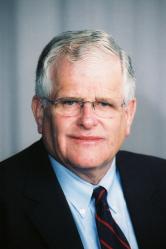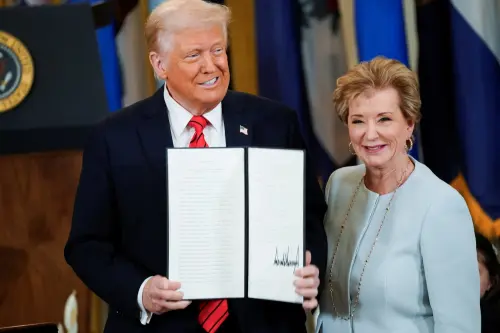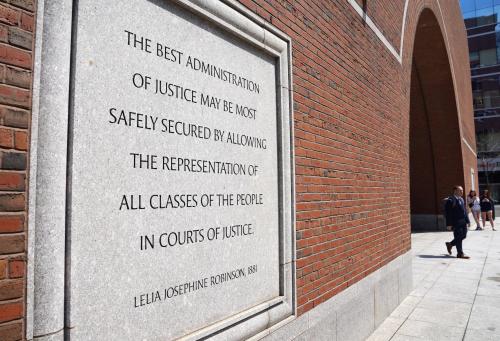Senate Republicans’ decision to vote on Justice Ruth Bader Ginsburg’s successor reflects individual and collective cost-benefit calculations of seating a rock-ribbed conservative in what may be the Trump administration’s waning days. As a fig leaf to obscure the hypocrisy of voting on President Trump’s election-year nominee after refusing to vote on President Obama’s in early 2016, Republicans have claimed an historical norm that doesn’t exist.
The GOP Senate’s initial claim
In March 2016, Senate Majority Leader Mitch McConnell tried to justify denying a vote on Obama’s nomination of DC Circuit Court Judge Merrick Garland to replace Justice Antonin Scalia: “All we are doing is following the long-standing tradition of not fulfilling a nomination in the middle of a presidential year.”
There is no such tradition. The table shows the nine Supreme Court vacancies in place during election years in the Court’s post-Civil War era—once Congress stabilized the Court’s membership at nine and the justices largely stopped serving as trial judges in the old circuit courts. Those nine election-year vacancies (out of over 70 in the period) were all filled in the election year—one by a 1956 uncontested recess appointment and eight by Senate confirmation.
| Vacancy | Date | Cause | Nominee and Nomination Date | Conf. date | Vote | Unified or Divided Party Control of WH and Senate |
| Woods | 5/14/1887 | Death | Lamar (12/6/1887) | 1/16/1888 | 32-28 | D (39-37) |
| Waite | 3/23/1888 | Death | Fuller (4/30/1888) | 7/20/1888 | 41-20 | D (39-37) |
| Bradley | 1/22/1892 | Death | Shiras (7/19/1892) | 7/26/1892 | Voice | U (47-39-2) |
| Harlan | 10/14/1911 | Death | Pitney (2/19/1912) | 3/13/1912 | 50-26 | U (52-44) |
| Lamar, J. | 1/2/1916 | Death | Brandeis (1/28/1916) | 6/1/1916 | 47-22 | U (56-40) |
| Hughes | 6/10/1916 | Resignation** | Clarke (7/14/1916) | 7/24/1916 | Voice | U (56-40) |
| Holmes | 1/12/1932 | Health | Cardozo (2/15/1932) | 2/24/1932 | Voice | U (48-47-1) |
| Minton | 10/15/1956 | Health | Brennan (10/15/1956, recess appointment) | D (48-47-1) | ||
| Warren* | Fortas (6/26/1968) | None | U (64-36) | |||
| Fortas* | Thornberry (same) | None | Same | |||
| Powell | 6/26/1987 | Health | Bork (7/7/1987, failed) | 42-58 | D (55-45) | |
| Kennedy (11/30/1987) | 2/3/1988 | 97-0 | Same | |||
| Scalia | 2/13/16 | Death | Garland (3/16/2016) | None | D (54-44) | |
| Ginsburg | 9/18/20 | Death | U (53-47) | |||
Note: Excludes 1872 and 1880 vacancies created after the election (in which the incumbent party prevailed): Hunt, confirmed Dec. 11, 1872 for a November 28 vacancy; Woods, confirmed Dec. 21, 1880 to a December 14 vacancy.
* No actual vacancies. Incumbents hinged their vacancy creation on their successors’ confirmations.
** Hughes became a presidential candidate.
The GOP Senate’s revised claim
Last year, given the lack of any “long-standing tradition” but anticipating the possibility of an election-year vacancy, McConnell fabricated a different history to justify treating a Trump nominee differently from Obama’s. He argued that “[y]ou have to go back to … 1880s to find the last time … a Senate of a different party from the president filled a Supreme Court vacancy created in the middle of a presidential election. That was entirely the precedent.” When that anticipation became reality with the death of Justice Ginsburg, he offered a slightly different excuse: “Since the 1880s, no Senate has confirmed an opposite-party president’s Supreme Court nominee in a presidential election year”. A National Review article claimed a norm: “when their party controls the Senate, presidents get to fill Supreme Court vacancies . . . [but] when the opposite party controls the Senate, the Senate gets to block Supreme Court nominees . . .”.
Other Republican senators have fallen in line. Mitt Romney (Utah) cited the party-control distinction in claiming that he “came down on the side of the Constitution and precedent as I’ve studied it.”
Pre-2016 modern-era confirmations offer a different story: First, it’s not as if there were a string of election-year vacancies, some during unified government, which got filled, and others during divided government, which didn’t. Rather all five election-year vacancies from the 1890s until the 1950s were during unified government, offering no test of whether divided government would have confirmed them. However, the three voice votes suggest the minority party, had it been in power, would have confirmed.
Second, even excluding as McConnell does the 1880s’ two divided-government confirmations, the two more recent divided-government vacancies got filled:
- in 1988, the Democratic-majority Senate voted 97-0 to confirm Justice Kennedy (after the 1987 rejection of the controversial Bork nomination), and
- Eisenhower made an uncontested October 1956 recess appointment of Justice Brennan. Had the Senate been in session, it would have confirmed a Brennan nomination—as it did early in 1957.
Bottom line: there was no historical justification for denying Garland a vote; thus, voting for Trump’s late-2020 nominee is hypocritical.
But there is more to this fig-leaf history than its lack of a factual basis.
First, it provides no reason why a vote is permissible only if the same party controls both the White House and the (constitutionally malapportioned) Senate. McConnell’s September 18 statement said “Americans reelected our majority in 2016 and expanded it in 2018 because we pledged to work with President Trump,” including on judicial appointments. Even so, 2018’s two-seat gain reflects no national consensus that a president elected with large popular vote deficit should be able to reshape the Court in the waning days of his reelection bid.
Second, historical precedents—even accurate ones—are of questionable value given that today’s Supreme Court confirmations happen in a different world than before. Let’s look at the period from 1901 to the end of the Johnson administration (1969) for some context. During that time, there were 10 median days to confirmation, with 62% by voice vote; since then, 65 median days and no voice votes.
Third, this cynical power play will weaken the Court’s legitimacy. I noted here the arguments from many sources that presidential elections put a necessary but indirect popular imprint on the judiciary, assuming that those choosing the judges reflect in some sense popular majorities. With the late 2020 confirmation, the Court will have a six-member conservative majority, five of whose members were appointed by presidents who gained office after initially losing the popular vote.
Finally, the appointment will strengthen what was until recently a fringe restructuring movement. If Democrats control the White House and Congress, there will be great pressure to restructure the Court by adding seats to counterbalance those occupied by Trump appointees. Some say, were roles reversed, Democrats would do what McConnell and company are doing. Maybe so, but that’s not the situation facing the country now.
The Brookings Institution is committed to quality, independence, and impact.
We are supported by a diverse array of funders. In line with our values and policies, each Brookings publication represents the sole views of its author(s).





Commentary
McConnell’s fabricated history to justify a 2020 Supreme Court vote
September 24, 2020